Key words
|
| |
| Cardiovascular disease, Blood pressure, Hypertension, Herbs, Remedy. |
| |
Introduction
|
| |
| Cardiovascular diseases have emerged as an important health problem in India. High blood pressure (BP) is a major risk factor and a better control can lead to prevention of 300,000 of the 1.5 million annual deaths from cardiovascular diseases in India. Poor adherence to medications is a major public health problem and remains one of the main unresolved issues in the management of hypertension 1patients with poor adherence to hypertension treatments are at an increased risk of serious adverse outcomes, including kidney failure, blindness, stroke, and heart disease 2 Many studies have documented low rates of adherence to antihypertensive medication among patients with hypertension 3 High blood pressure, also known as hypertension, is usually defined as having a sustained blood pressure of 140/90 mm Hg or above. High blood pressure often causes no symptoms, or immediate problems, but it is a major risk factor for developing a serious cardiovascular disease (conditions that affect the functioning of the heart and the circulation of blood around the body), such as a stroke or heart disease. Hypertension is classified as either primary (essential) hypertension or secondary hypertension. About 90–95% of cases are categorized as "primary hypertension. The remaining 5–10% of cases (Secondary hypertension) are caused by other conditions that affect the kidneys, arteries, heart or endocrine system.4 Persistent hypertension is one of the risk factors for stroke, myocardial infarction, heart failure and arterial aneurysm, and is a leading cause of chronic kidney failure.5 Hypertension has an overall incidence of 20%, with onset usually occurring after age 20. The prevalence rises with age to over 50% over age 65. 95 to 99% of hypertensive individuals have essential hypertension. Persons with hypertension are three to four times more likely to experience a major cardiovascular event (e.g., myocardial infarction, cerebrovascular accident, congestive heart failure) The upper or first number in a blood pressure reading is the systolic pressure and the lower or second number is called the diastolic pressure. According to National heart, Lung, and Blood Institute Guidelines: Normal blood pressure is below 120/80 mmHg. |
| |
|
Risk factors
|
| |
| Hypertension is more common in India at all ages and also in persons from lower socio economic groups. Individual risk factors include the following Family history |
| |
| Alcohol use |
| |
| High sodium intake |
| |
| Stress |
| |
| Sedentary lifestyle |
| |
| Obesity |
| |
| High sugar intake |
| |
|
Signs and symptoms: 7
|
| |
| Essential hypertension has no symptoms except in extreme cases or after cardiovascular complications result. Extremely high blood pressures may cause headaches. |
| |
| High blood pressure usually doesn't cause any symptoms in the early stages. |
| |
| Symptoms associated with high blood pressure include: |
| |
| • Shortness of breath (dyspnoea), either while exercising or at rest |
| |
| • Fatigue |
| |
| • Dizziness or fainting spells (syncope) |
| |
| • Chest pressure or pain |
| |
| • Swelling (edema) in your ankles, legs and eventually in the abdomen (ascites) |
| |
| • Bluish colour to your lips and skin (cyanosis) |
| |
| • Racing pulse or heart palpitations |
| |
| • Headache |
| |
| • Nosebleeds. |
| |
|
Pathophysiology: 8, 12
|
| |
| Essentially, BP is the outcome of cardiac output and peripheral vascular resistance (BP=cardiac output × peripheral vascular resistance). Therefore, maintenance of a normal BP is dependent on the balance between the cardiac output and peripheral vascular resistance. |
| |
| Cardiac output and peripheral resistance are the two determinants of arterial pressure. Cardiac output is determined by stroke volume and heart rate; stroke volume is related to myocardial contractility and to the size of the vascular compartment. Peripheral resistance is determined by functional and anatomic changes in small arteries and arterioles. |
| |
|
Essential Hypertension-:9
|
| |
| The pathogenesis of essential hypertension is multi factorial and highly complex. |
| |
| Many factors (and risk factors) have been implicated in the genesis of essential |
| |
| Hyper tension, which include the following: |
| |
| -Increased sympathetic nervous system activity. -Increased production of sodium-retaining hormones and vasoconstrictors. |
| |
| -Deficiencies of vasodilators such as prostacyclin and nitric oxide. |
| |
| -Inappropriate or increased renin secretion, resulting in increased production of angiotensin-II and aldosterone. |
| |
| - Genetic predisposition. |
| |
|
Secondary Hypertension10
|
| |
| The common identifiable causes of hypertension are the following: |
| |
| - Chronic kidney disease |
| |
| -Reno vascular disease |
| |
| -Cushing’s syndrome (hyper secretion of the hormone cortisol) |
| |
| -Pheochromocytoma (adrenal tumor) |
| |
| -Drugs such as nonsteroidal antiinflammatory drugs (NSAIDs) and oral contraceptives |
| |
|
Complications /sequelae 11
|
| |
| The complications of untreated hypertension includes |
| |
| Stroke |
| |
| Aortic aneurysm |
| |
| Myocardial infarction |
| |
| Congestive heart failure |
| ` |
| Cardiac enlargement |
| |
| Left ventricular hypertrophy |
| |
| Renal insufficiency |
| |
| Cerebral thrombosis or embolization |
| |
|
Treatment based on Herbal remedies:
|
| |
| Herbal medicine has made many contributions to commercial drug preparations manufactured today .herbal medicine has been losing ground to new synthetic medicines touted by scientists and physicians to be more effective and reliable. High blood pressure is most common and responds well to lifestyle changes, such as losing weight, dietary changes, exercise, and stress reduction. Natural treatment of essential hypertension can bring blood pressure values into the normal range; however, if lifestyle changes are not maintained, hypertension will probably return. Secondary hypertension has an organic cause (i.e., kidney disease, pregnancy) and must be evaluated and monitored by a physician since the underlying cause must also be addressed. Hence, in this present article several herbs like Allium sativum, Centella asiatica, Ginkgo biloba, Crataegus oxycantha, Crataegus monogyna, Passiflora edulis, Hibiscus sabdariffa, Elaeocarpus ganitrus, Hypericum perforatum, and Achillea millefolium are reviewed related to their efficacy in treatment of hypertension. |
| |
|
Garlic (Allium sativum):
|
| |
| Allium sativum, commonly known as garlic, is a species in the onion genus, Allium. It has been used throughout its history for both culinary and medicinal purposes. The garlic plant's bulb is the most commonly used part of the plant.Garlic cloves are used for consumption (raw or cooked) or for medicinal purposes. They have a characteristic pungent, spicy flavor that mellows and sweetens considerably with cookin13. In few in vitro studies, garlic has been found to have antibacterial, antiviral, and antifungal activity. However, these actions are less clear in vivo. Garlic is also claimed to help prevent heart disease (including atherosclerosis, high cholesterol, and high blood pressure) and cancer. Studies, and some early investigational studies in humans, have suggested possible cardiovascular benefits of garlic. A study found garlic supplementation reduced accumulation of cholesterol on the vascular walls of animals.14Another study had similar results; with garlic supplementation significantly reducing aortic plaque deposits of cholesterol-fed rabbits.15Allium sativum has been found to reduce platelet aggregation16and hyperlipidemia.17It is also an antidiabetic agent 18 |
| |
| When crushed, Allium sativum yields allicin, an antibiotic19and antifungal compound (phytoncide). It has been claimed to be used as a home remedy to help speed recovery from strep throat or other minor ailments because of its antibiotic properties It also contains the sulfur-containing compounds alliin, ajoene, diallylsulfide, dithiin, S-allylcysteine, and enzymes, B vitamins, proteins, minerals, saponins, flavonoids, and Maillard reaction products, which are not sulfur-containing compounds. Furthermore, a phytoalexin (allixin) was found, a nonsulfur compound with a γ-pyrone skeleton structure with antioxidant effects, antimicrobial effects, 20 antitumor promoting effects, inhibition of aflatoxin B2 DNA binding, 21 and neurotrophic effects. |
| |
| Garlic is thought to have diaphoretic, expectorant, antispasmodic, antiseptic, bacteriostatic, antiviral, and antihelminthic and hypotensive effects; it is commonly used to treat chronic bronchitis, recurrent upper respiratory tract infections and influenza 22. In Europe and India, garlic remedies are used to treat coughs, colds, hay fever and asthma. Many modern herbalists and folk healers still rely on garlic oil ear drops to heal the pain of a child’s ear infection. |
| |
| The German Commission E recommends garlic as a supportive dietary measure to lower elevated blood lipids and as a preventive measure for age-dependent vascular changes; it does not note any contraindications23 |
| |
|
Anti-hypertensive activity of Garlic (Allium sativum)
|
| |
| A study was designed to elucidate the antihypertensive effect of garlic in the two kidneys-- one-clip (2K-1C) Goldblatt model. Since the hypertension in this model depends largely on the increasing concentrations of vasopressor agents (prostaglandins and angiotensin II) there is a strong indication that reducing these factors could contribute in controlling the pathological rise in blood pressure. In this study, single or multiple doses of 0.5 ml of aqueous extract of garlic were given orally to 2K-1C rats. The data shows that the single dose of garlic used had a maximum antihypertensive effect 2-6 h after administration. The residual effect of this single dose continued for up to 24 h. The multiple dose of garlic appeared to be effective in restraining the expected rise in blood pressure that normally occurs in 2K-1C rats. Switching multiple-dose treatments halfway through the experiment further strengthened the findings. The study suggests that garlic does have an effective antihypertensive ability, and may be used as a supplementary and natural remedy in cases of unilateral renovascular hypertension.24 |
| |
| In vitro data: In isolated strips of canine carotid arteries and in isolated rat aorta,garlic exerted direct vasodilating effects 25, 26. Garlic also activated the synthesis Of nitric oxide, which is a potent endogenous vasodilator. 27 |
| |
| Animal data: Garlic extracts reduce blood pressure in rats and dogs28,31. In anesthetized dogs, for example, gastric administration of encapsulated garlic powder induced dose-dependent natriuretic and diuretic responses which reached a maximum 30-40 minutes after garlic administration and decreased to basal levels after 100-150 minutes. A simultaneous decrease in arterial blood pressure was observed which Continued past the 250-minute mark32. In rabbits, intravenous administration of Garlic extracts elicited a dose-dependent diureticnatriuretic response and a gradual Decrease in heart rate, but not in arterial blood pressure33. |
| |
| Human data: |
| |
| In a study of 20 normal adults, garlic powder supplements significantly increased the diameter of conjunctival venules and arterioles 34. |
| |
| In a meta-analysis of seven placebo-controlled clinical trials using Kwai garlic powder supplementation, three showed a significant reduction in systolic blood pressure (SBP) and four in diastolic blood pressure (DBP). The overall pooled mean difference in the change in SBP was 5- 7% greater in the subjects who were treated with garlic then in those treated with placebo. The corresponding reduction in DBP in the garlic-treated subjects were slightly smaller, 35. In one of these studies, the onset of garlic’s hypotensive action was within five hours after administration of a single dose of 2400 mg of dried garlic; the effect lasted more than 14 hours. |
| |
| In a prospective, four-year clinical trial of atherosclerotic adults, standardized garlic powder supplementation (900 mg daily) lowered blood pressure by 7%(P<0.05)36 |
| |
|
Gotu kola (Centella asiatica):
|
| |
| Centella asiatica is commonly called as Gotu kola. It is a perennial, herbaceous creeper with kidney shaped leaves, found in India, Sri Lanka, Madagascar, South Africa, Australia, China, and Japan. Centella prefers to grow in shady, moist, or marshy areas.37,38 |
| |
| Centella asiatica is one of the chief herbs for treating skin problems, to heal wounds, for revitalizing the nerves and brain cells, hence primarily known as a "Brain food" in India. Centella contains several active constituents, of which the most important are the triterpenoid saponins, including asiaticoside, centelloside, madecassoside, and asiatic acid. In addition,Centella contains other components, including volatile oils, flavonoids, tannins, phytosterols, amino acids, and sugars.39 Centella may also have potential application for scleroderma,40 alcohol-induced liver cirrhosis,41 leg ulcers,42 and as adjunctive treatment in leprosy.43 Animal studies indicate it may have potential for prevention of aspirin- or ethanol-induced gastric ulcers.44,45 Centella is used in Ayurvedic medicine for the treatment of anxiety.46 Centella has long been recommended for the treatment of keloids and/or hypertrophic scars47 In Nepal this herb is used traditionally in rheumatism, indigestion, leprosy, poor memory48,About 4 teaspoonful of leaf juice by squeezing about 50 leaves between palms is taken orally in the morning for 2-3 weeks for its cooling property to body and stomach49. Crushed leaf and root extract is applied to the affected parts to kill germs from wounds50. Decoction of leaves is also applied to cure leprotic wound50. The dried herb is used as detoxicant, diuretic and to lower blood pressure and decrease heart rate51. In Bangladesh, whole plant is utilized by Kavirajes (a community of Chalna area, Bangladesh) to treat multiple ailments like dog bite, asthma, carminative, itching, leucorrhoea, malaria, tumour and wounds52. In Fiji for treating Childhood tidal fevers, eye problems, fractures, swollen joints, rib pain and unwanted pregnancy. C. asiatica extracts showed a dramatic increase in the cyclic adenosine monophosphate content with a subsequent rise in the nonesterified fatty acids content in human adipocytes 53. |
| |
|
Anti-hypertensive activity of Gotu kola (Centella asiatica):
|
| |
| In a study forty patients (21 males, 19 females; mean age 48 years) with severe venous hypertension, ankle swellings, and lipo dermatosclerosis, were randomized to receive TTFCA 60 mg twice daily or placebo for eight weeks; patients in the study did not wear compression stockings. After trial conclusion, patients taking the herbal extract experienced a significant decrease in skin flux and rate of ankle swelling compared to baseline values (p<0.05). In addition, patients in the active group reported rapid clinical improvement, reflected by a reduction in the analogue scale line score (e.g., symptoms of edema, pain, restless limbs, swelling, and change in skin condition/color) from 9.5 at baseline to 4.5 after eight weeks. In another study using Laser Doppler evaluation, subjects taking 60 mg TTFCA twice daily for six weeks demonstrated a 29-percent decrease in resting flux (p<0.05), 52% increase in venoarteriolar response (p<0.05), and 66-mL reduction in leg volume. Similarly, those utilizing the herbal extract demonstrated 7.2-percent increase in pO2 and 9.6- percent reduction in pCO2 (p<0.05).54 |
| |
| Another study involving 87 patients with chronic venous hypertensive micro angiopathy found that microcirculatory parameters were significantly improved compared with placebo in patients taking Brahmi (Centella asiatica) extract (60 mg or 120 mg daily) after 60 days .The ability of Brahmi (Centella asiatica) extract to reduce capillary permeability in patients with venous hypertension has also been demonstrated in a placebo-controlled study 55. |
| |
|
Ginkgo (Ginkgo biloba):
|
| |
| Ginkgo biloba, also known as Maidenhair Tree, is the oldest living tree species, dating back approximately 200 million years. Ginkgo seeds and leaves have been used in traditional Chinese medicine for over 5,000 years. In modern botanical medicine, extracts are made from the distinctive, fan-shaped leaves. These extracts contain approximately 24-percent flavone glycosides (primarily composed of quercetin, kaempferol, and isorhamnetin) and 6-percent terpene lactones (2.8- 3.4% ginkgolides A, B, and C, and 2.6-3.2% bilobalide). Other constituents include proanthocyanadins, glucose, rhamnose, organic acids (hydroxykinurenic, kynurenic, protocatechic, vanillic, shikimic), D -glucaric acid and ginkgolic acid and related alkylphenols. Ginkgo biloba extracts exhibit potent antioxidant activity,56-59 and are capable, in vitro, of scavenging various reactive oxygen species,60,61 and inhibiting or reducing the functional and morphological impairments observed after lipoperoxide release.62,63 Animal and human studies note that Ginkgo extracts reduce clastogenic (chromosome-breaking) activity in the plasma after radiation exposure.64 It is also possible that a large part of Ginkgo’s anti-ischemic effect involves inhibition of free radical formation. |
| |
| Ginkgo extracts appear to be capable of stabilizing and, in some cases, improving cognitive performance and social functioning of patients with dementia.65-68Ginkgo biloba extract lowers fibrinogen levels and decreases plasma viscosity.69 Ginkgo administration might improve the clinical outcome following cardiopulmonary bypass by limiting oxidative stress.70,71Ginkgo extract is effective for the treatment of congestive (particularly breast symptoms) and neuropsychological symptoms of PMS,72and the alleviation of idiopathic cyclic edema.73Ginkgo extract has been used successfully to treat impotence and sexual dysfunction secondary to antidepressant medication use.74 peripheral arterial occlusive disease,75,76chronic venous insufficiency,77 and hemorrhoids.78Ginkgo biloba was shown to be effective in arresting the development of liver fibrosis associated with chronic hepatitis B.79 |
| |
|
Anti-hypertensive activity of Ginkgo biloba:
|
| |
| The 2 kidney, 1-clip (2K, 1C) model of hypertension was used to investigate the potential antihypertensive effect of a standardized leaf extract of Ginkgo biloba (EGb 761). Clipping of the renal artery resulted in gradual elevation of the systolic blood pressure (SBP) reaching a plateau after 4 weeks of surgery. Treatment of hypertensive rats with EGb 761 (60, 90, 180mg/kg/day orally) was therefore started 4 weeks after surgery and continued for 3 weeks. This led to a dose-dependent reduction in SBP with no significant change in heart rate. Control hypertensive rats showed a significant elevation of total protein thiols (Pr-SHs level) in both clipped and non-clipped kidneys as well as in the serum. However, glutathione peroxidase (GSHPx) activity was decreased in the clipped kidneys but elevated in the non-clipped ones and in the blood. The malondialdehyde (MDA) level was raised in clipped kidneys but not in non-clipped ones nor in the serum. Nitric oxide (NO level) and angiotensin converting enzyme (ACE) activity were increased in both clipped and non-clipped kidneys but not in the serum. Endothelium-dependent and -independent relaxation of aortic rings towards acetylcholine (Ach) and sodium nitroprusside (SNP) were impaired. Treatment with EGb 761 (180mg/kg/day for 3 weeks) was associated with recovery of GSH-Px activity in clipped kidneys, inhibition of ACE activity in both kidneys and a reduction in the elevated NO level of the non-clipped kidneys, decreased responsiveness to the vasoconstrictor NE and improvement of endothelial function as evidenced by restoration of endothelium-dependent vasorelaxation induced by Ach. The observed beneficial effects of the EGb 761 may be attributed to different factors, including ACE inhibition and maintenance of cellular antioxidant capacity as well as preserving vascular reactivity towards endothelium-dependent and -independent vasodilators while inhibiting responses to vasoconstrictors.80 |
| |
| In a study Umegaki K, et al examined the effects of Ginkgo biloba extract (GBE) on the development of hypertension, platelet activation and renal dysfunction in deoxycorticosterone acetate (DOCA)- salt hypertensive rats. Both DOCA-salt hypertensive rats and normotensive rats were fed a 2% GBE diet for 20 days. Blood pressure (BP) was measured by two methods, namely 1.The tail-cuff and telemetry methods. 2. Development of hypertension was attenuated in rats fed a 2% GBE diet. In addition, an increase in heart weight, an indicator of sustained high BP, was inhibited significantly by feeding of the GBE diet. 3. Decreases in 5-hydroxytryptamine content in platelets, a marker of platelet activation in vivo associated with hypertension, were also prevented by feeding of the GBE diet. Ginkgo biloba extract itself did not inhibit ADP- and collageninduced platelet aggregation examined in vitro. Feeding of the GBE diet tended to inhibit increases in plasma urea nitrogen due to hypertension. 4. The telemetry study demonstrated that BP and heart rate (HR) showed a clear circadian rhythm and the antihypertensive effect of GBE was prominent in the daytime, a resting period for rats. This antihypertensive effect of GBE was not detected in normotensive rats. In contrast, the inhibitory effect of GBE on HR was independent of time and was observed in both normotensive and hypertensive rats. 5. These results indicate that GBE has an antihypertensive and bradycardiac action, which are time dependent and independent, respectively.81 |
| |
|
Hawthorn berry (Crataegus species):
|
| |
| Hawthorn (Crataegus species) has been used to treat heart disease as far back as the 1st century. Hawthorn contains many substances that may benefit the heart. These antioxidant flavonoids including OPCs may help dilate blood vessels, improve blood flow, and protect the blood vessels from damage.82 |
| |
| The berries, leaves, and flowers of the hawthorn plant have been used for medicinal purposes. Most modern preparations use the leaves and flowers, which are believed to contain more of the flavonoids than the berries83 |
| |
| Traditionally, the berries were used to treat heart problems ranging from irregular heartbeat, high blood pressure, chest pain, hardening of the arteries, and heart failure Animal and laboratory studies report hawthorn contains antioxidants, including oligomeric procyandins (OPCs, also found in grapes) and quercetin., 84,85the leaves and flowers are used medicinally, and there is good evidence that hawthorn can treat mild-to-moderate heart failure. Antioxidants found in hawthorn may help stop some of the damage from free radicals, especially when it comes to heart disease.86 |
| |
|
Anti-hypertensive activity of Hawthorne (Crataegus oxycantha and monogyna)
|
| |
| |
| Hawthorne has been used traditionally for cardiovascular disorders in many cultures. It contains a number of active constituents including flavonoids, catechins, triterpene saponins, amines, and oligomeric proanthocyanidins (OPCs). Hawthorne has been shown to exert a mild blood pressure lowering effect 87,88 that can take up to four weeks for maximal results. It is believed that the herb dilates coronary blood vessels. 88 One in vitro study on rat aorta found pro anthocyanidins extracted from Hawthorne relaxed vascular tone via endothelium-dependent nitric oxide-mediated relaxation. 89 |
| |
| Crataegus oxycantha is a homoeopathically prepared mother tincture that has been clinically used to treat hypertension and cardiovascular complaints. However there is insufficient research to confirm its efficacy in the treatment of hypertension. The study is done to investigate the efficiency of Crataegus oxyacantha in the treatment of refractory hypertension in adult males aged between thirty-five and sixty-five years, currently taking allopathic treatment, namely Angiotensin-Converting Enzyme inhibitors combined with a diuretic, and to evaluate the effect of Crataegus oxyacantha on associated symptoms of hypertension. These include headaches; palpitations; vertigo; blurred vision and tinnitus. The study was a placebo controlled doubleblinded trial that extended over a period of 12 weeks. Thirty male participants between the ages of thirtyfive to sixty-five, that were pre-diagnosed with refractory hypertension for a minimum of two years with a fluctuating blood pressure reading above 150/95 mmHg and currently on allopathic medication i.e. ACE-inhibitor with a combined diuretic were recruited for the study by means of advertisements placed at the University of Johannesburg health clinic, pharmacies and community clinics. Participants were randomly placed in either the experimental or the control group. Participants meeting the inclusion criteria underwent a physical examination and consented to the study (Appendix A). The participants blood pressure was measured on both arms as advised by Milne in the South African hypertensive guidelines 2003 (Annexure A), at the first visit and for two consecutive mornings in order to obtain a baseline reading. He was randomly assigned in either the experimental or the control group. The control group received a 50ml bottle of the 20% alcohol placebo and the experimental group received a 50ml bottle of the homoeopathic remedy, Crataegus oxyacantha θ. He was instructed to take 10 drops in 125ml water twice daily after meals. During the trial period the participant’s blood pressure was assessed every 2 weeks against the measured baseline readings for a period of 12 weeks. The severity of the following symptoms was assessed every 2 weeks, headaches; palpitations; vertigo; blurred vision and tinnitus and other symptoms that he may have experienced. These results were graded and recorded on the progress form . The data obtained from the participants was analysed using descriptive statistics (frequencies and percentages). The blood pressure of the experimental group was compared to the control group as obtained at the first consultation and each of the six follow-up visits. |
| |
| Groups were compared using the Chi-Square test and the Non Parametric Mann Whitney U test. Statistical analysis showed significant differences, P <0.05 for the systolic blood pressure between the experimental and control group. There was a significant decline in the diastolic blood pressure of the experimental and the control group. The diastolic pressure of the control showed a significant decline between day one and week six, however remained constant from week six to week twelve. This implies that the placebo may have provided some benefit towards the lowering of diastolic blood pressure in adult males. The associated symptoms were investigated and the results obtained indicate that headaches and blurred vision remained a constant mild symptom that was experienced throughout the twelve week trial period. Due to the statistical difference between the experimental and the control group in favour of the experimental group, the null hypothesis was rejected. Preliminary findings suggest that Crataegus oxycantha is effective in reducing elevated systolic and diastolic blood pressure in adult males with refractory hypertension.90 |
| |
|
Passiflora (Passiflora edulis):
|
| |
| The genus Passiflora, comprising about 400 species, is the largest in the family Passifloraceae 91, 92. The species of this genus are distributed in the warm temperate and tropical regions of the World, but they are much rarer in Asia, Australia, and tropical Africa 92. P. edulis is a wide spread plant cultivated around all tropical countries of the world 93. The P. edulis is commonly known as yellow passion fruit 94Two types of P. edulis are grown commercially, the purple form (P. edulis Sims) and a yellow form (P. edulis var. flavicarpa Degenerer) . P. edulis is included in pharmacopoeias of several countries 95. The plants of genus Passiflora are shrubs and herbs, mostly climbers with auxillary tendrils. From the methanol extract of air dried leaves, a cyclopropane triterpine, glycoside, named Passiflorine 96 was isolated. |
| |
| Passiflora edulis possess potent Anti inflammatory97, Anti oxidant 98Anti microbial 99, Anti tumour, and Anti fungal activities.100 |
| |
|
Anti-hypertensive activity of Passiflora edulis:
|
| |
| In a Research article Orally administered methanol extract of Passiflora edulis rind (10 mg/kg or 50 mg/kg) or luteolin (50 mg/kg), which is one of consistent polyphenols of the extract, significantly lowered systolic blood pressure in spontaneously hypertensive rats (SHRs). 101Quantitative analysis by liquid chromatography tandem mass spectrometry (LC-MS/MS) showed that the extract contained 20 microg/g dry weight of luteolin and 41 micro/g dry weight of luteolin-6-C-glucoside. It also contained gamma-aminobutyric acid (GABA, 2.4 mg/g dry weight by LC-MS/MS or 4.4 mg/g dry weight by amino acid analysis) 102which has been reported to be an antihypertensive material. Since the extract contained a relatively high concentration of GABA, the antihypertensive effect of the extract in SHRs might be due mostly to the GABA-induced antihypertensive effect and partially to the vasodilatory effect of polyphenols including luteolin.103-105 |
| |
|
Rosalle (Hibiscus. sabdariffa):
|
| |
| H. sabdariffa a shrub belonging to the family— Malvaceae. It is thought of native to Asia (India to Malaysia) or Tropical Africa. The plant is widely grown in tropics like Caribbean, Central America, India, Africa, Brazil, Australia, Hawaii, Florida and Philippines as a home garden crop. H. sabdariffa is a hardy herbaceous shrub, grows well in most soils that are well drained. The flowers are hermaphrodite and are pollinated by insects106. In Egypt and Sudan, the deep redtea from the calyces, called Karkade, is popular as a refrigerant107. It is commonly used to make jellies, jams and beverages. In Ayurvedic literature of India, different parts of this plant have been recommended for various ailments like hyper tension, pyrexia and liver disorders. It is traditionally used as antiseptic, aphrodisiac, astringent, cholagogue, demulcent, digestive, diuretic, emollient,purgative, refrigerant, sedative, stomachic and tonic 108-111 The leaf is reported to contain protein, fat, carbohydrate, fibre, ash,calcium, phosphorus, iron, thiamine,.ßcarotene, riboflavin, niacin and ascorbic acid 112-118 The flower yields a yellow dye; the major pigment identified is daphniphylline. The plant contains flavonoids such as hibiscitrin and hibiscetin1 and dried calyces contain the flavonoids gossypetine, hibiscetine and sabdaretine. It also contains alkaloids, ß-sitosterol, anthocyanin, citric acid, cyanidin-3-rutinose, delphinidin, galactose, pectin, protocatechuic acid, quercetin, stearic acid and wax 119.Some studies indicates that it also found to possess Anti oxidant 96,hepato protective 120 .anti cancer 121,anti hyperlipidaemic activity 122 |
| |
|
Anti-hypertensive activity of Hibiscus sabdariffa:
|
| |
| Hibiscus sabdariffa L. (Malvaceae) has been used in different countries as an antihypertensive agent .the Aqueous extract of petals exhibited antihypertensive and cardioprotective effects in rats123 Infusion is also found to lower both systolic and diastolic pressure significantly in spontaneously hypertensive and normotensive rats. |
| |
| In a study the aqueous extracts of the calyx showed a dose-dependent decrease in mean arterial pressure of the rats124. The extract has a vasodilator effect in the isolated aortic rings of hypertensive rats. These effects are probably mediated through the endothelium-derived nitric oxide-cGMP-relaxant pathway and inhibition of calcium influx into vascular smooth muscle cells125. Daily consumption of tea lowers blood pressure in pre and mildly hypertensive adults and may prove an effective component of the dietary changes recommended for people at risk of developing hypertension 126A standardized extract has shown effective blood pressure lowering activity in hypertensive humans. A recent double blind, reference-controlled trial demonstrated significant reduction in blood pressure in the hibiscus group when compared with lisinopril 127 . Oxidation and anti-hyperlipidemia in fructose and cholesterol-fed rats was demonstrated 128. It revealed that the extract reduced the level of LDL and the ratio of LDL-cholesterol to HDLcholesterol. Consumption of dried calyx ethanol extract reduces lipid profile in rats129Hypocholesterolemic and antioxidant effects of aqueous extracts in hypercholesterolemic rats is also reported 130. Antioxidant effects of the aqueous extracts of dried calyx using rat low density lipoprotein was investigated and the study demonstrated protective effect of roselle on LDL oxidation131. Biochemical dynamics and hypocholesterolemic action of the plant demonstrated that its administration induces significant decrease in the activity of serum GOT, GPT, alkaline and acid phosphatase as well as total serum protein. These values nearly returned to the initial levels after 9 weeks of administration132.COX- 1 enzyme inhibition than COX-2 inhibition133. This study has proved the anti hypertensive activity of H. Sabdariffa. |
| |
| A Pharmacological work has demonstrated that Anti hypertensive effect is probably produced by a diuretic activity and inhibition of the angiotensinconverting enzyme (ACE). Two clinical trials have confirmed the antihypertensive effect using watery infusions, in which a natriuretic effect was also detected. To compare therapeutic effectiveness, tolerability, and safety, as well as the effect on serum electrolytes and the ACE inhibitory effect of a herbal medicinal product prepared from the dried extract of H. sabdariffa calyxes (HsHMP) with those of lisinopril on patients with hypertension (HT), a randomized, controlled, and double-blind clinical trial was conducted. Patients of either sex, 25 - 61 years of age, with hypertension stage I or II, were daily treated for 4 weeks with the HsHMP, 250 mg of total anthocyanins per dose (experimental group), or 10 mg of lisinopril (control group). Outcome variables included effectiveness (diastolic blood pressure [DBP] reduction, >or= 10 mmHg), safety (absence of pathological modifications in the biochemical tests of hepatic and renal function), tolerability (absence of intense side effects), effect on serum electrolytes, and effect on ACE activity. Basal analysis included 193 subjects (100 in the experimental group), while outcome variable analysis integrated 171. Results showed that the experimental treatment decreased blood pressure (BP) from 146.48/97.77 to 129.89/85.96 mmHg, reaching an absolute reduction of 17.14/11.97 mmHg (11.58/12.21%, p < 0.05). The experimental treatment showed therapeutic effectiveness of 65.12 % as well as tolerability and safety of 100 %. BP reductions and therapeutic effectiveness were lower than those obtained with lisinopril (p < 0.05). Under the experimental treatment, the serum chlorine level increased from 91.71 to 95.13 mmol/L (p = 0.0001), the sodium level showed a tendency to decrease (from 139.09 to 137.35, p = 0.07), while potassium level was not modified. ACE plasmatic activity was inhibited by HsHMP from 44.049 to 30.1 Units (Us; p = 0.0001). In conclusion, the HsHMP exerted important antihypertensive effectiveness with a wide margin of tolerability and safety, while it also significantly reduced plasma ACE activity and demonstrated a tendency to reduce serum sodium (Na) concentrations without modifying potassium (K) levels.134 |
| |
| A study published in the Journal of Human Hypertension has shown that drinking hibiscus tea can reduce high blood pressure in people with type 2 diabetes. The study results showed the average systolic blood pressure for those drinking hibiscus tea decreased from 134.8 mmHg (17.97 kPa) at the beginning of the study to 112.7 mmHg (15.03 kPa) at the end of the study, one month later.135 |
| |
| A study of 65 subjects published in 2009 found that 3 cups of hibiscus tea daily for 6 weeks reduced systolic blood pressure by 7 mm Hg in prehypertensive & mildly hypertensive participants. In those with mean systolic blood pressure over 129 mm Hg, the reduction was nearly 14 mm Hg. The study's lead author has noted that hibiscus flowers contain anthocyanins, which are believed to be the active antihypertensive compounds, acting as angiotensin-converting enzyme (ACE) inhibitors.136-138 |
| |
| In a study Patients from 30 to 80 years old with diagnosed hypertension and without antihypertensive treatment for at least 1 month before were included. The experimental procedure consisted of the administration of an infusion prepared with 10 g of dry calyx from H. sabdariffa on 0.51 water (9.6 mg anthocyanins content), daily before breakfast, or captopril 25 mg twice a day, for 4 weeks. The outcome variables were tolerability, therapeutic effectiveness (diastolic reduction > or = 10 mm Hg) and, in the experimental group, urinary electrolytes modification. Ninety subjects were included, 15 withdrew from the study due to nonmedical reasons; so, the analysis included 39 and 36 patients from the experimental and control group, respectively. The results showed that H. sabdariffa was able to decrease the systolic blood pressure (BP) from 139.05 to 123.73mm Hg (ANOVA p < 0.03) and the diastolic BP from 90.81 to 79.52mm Hg (ANOVA p < 0.06). At the end of the study, there were no significant differences between the BP detected in both treatment groups (ANOVA p > 0.25). The rates of therapeutic effectiveness were 0.7895 and 0.8438 with H. sabdariffa and captopril, respectively (chi2, p > 0.560), whilst the tolerability was 100% for both treatments. A natriuretic effect was observed with the experimental treatment. The obtained data has confirmed that the H. sabdariffa extract, standardized on 9.6mg of total anthocyanins, and captopril 50 mg/day, did not show significant differences relative to hypotensive effect, antihypertensive effectiveness, and tolerability.139 |
| |
|
Rudraksha (Elaeocarpus ganitrus)
|
| |
| Elaeocarpus ganitrus Roxb. (Syn. E. sphaericus Gaertn; family Elaeocarpaceae), is popular for its attractive fruit stones. Its beads are covered by an outer shell of blue color on fully ripening; hence also called blueberry beads140It finds a prominent place in Hindu religion and Ayurveda, the ancient Indian system of medicine. In Hindi it is known as Rudraksha141. Rudrakasha fruits are thermogenic, sedative and are useful in cough, bronchitis, neuralgia, cephalagia, anorexia, migraine, manic conditions and other brain disorders142. The flesh or pulp of drupe is given in epilepsy, diseases of head and in mental illness143. Besides it is reported to exhibit multifarious pharmacological activities that include antiinflammatory144, analgesic145, sedative145, antidepressant146, antiasthmatic147hypoglycemic143, antihypertensive148–150, smooth muscle relaxant151, hydrocholeretic152, antiulcerogenic and anticonvulsant153. A detailed study on pharmacognostic standards of Rudraksha is lacking. In ancient Indian medicine, the fruits were employed to ward off evil spirits and omens154which can be considered to be at least partly manifestations of microbial infection. In addition, the Rudrakasha extracts also known to exhibit very high antimicrobial activity 155. |
| |
| According to the Ayurvedic medical system, wearing of Rudraksha can have a positive effect on heart and nerves. |
| |
|
Anti-hypertensive activity of Elaeocarpus ganitrus
|
| |
| In a study Ethanolic extract of the fruit of E. ganitrus have been reported to exhibit sedative, hypnotic, tranquillizing, anticonvulsive, antiepileptic and antihypertensive Properties156,157. The ethanolic extract of leaves of E. ganitrus yielded quercetin, gallic and ellagic acids, (±) elaeocarpine, (±) iso-elaeocarpine 158 and rudrakine.159 Aqueous extract of Elaeocarpus ganitrus Roxb. Seeds powder (Family: Elaeocarpaceae) was evaluated for its antihypertensive activity in renal artery occluded hypertensive rats. Male Wistar rats (180-200g) were pretreated with aqueous extract of E. ganitrus for 6 weeks. Hypertension was induced in animals by clamping the renal artery with renal bulldog clamp for 4 h. Ischemia of the kidneys causes elevation of blood pressure by activation of the reninangiotensin system. Elevated blood pressure of the animals was significantly (p<0.05) decreased by the aqueous extract of E. ganitrus at the dose levels of 25, 50 and 100mg/kg, i.v. Captopril, angiotensin converting enzyme inhibitor (ACE-I) at the dose of 1 mg/kg, i.v showed significantly (p<0.05) reduced in the elevated blood pressure. The anti hypertensive activity of aqueous extract of E. ganitrus is due to the action on rennin-angiotensin system. |
| |
|
St.johns wort (Hypericum perforatum)
|
| |
| St John's wort is the plant species Hypericum perforatum, and is also known as Tipton's Weed, Chase-devil, or Klamath weed.160 St John's wort is used to refer to any species of the genus Hypericum .Hypericum perforatum is a yellow-flowering, stoloniferous or sarmentose, perennial herb indigenous to Europe, which has been introduced to many temperate areas of the world and grows wild in many meadows 161Hypericum perforatum (St. John's wort) is a five-petalled, yellow-flowered perennial weed common to the United States, Europe, and Asia. Small, dark red dots on the petals contain hypericin, one of many compounds found in this plant. Herb and flowers contain various polyphenols: flavonoids (rutin, hyperoside, isoquercetin, quercitrin,I62,II8-biapigenin, amentoflavone, astilbin, miquelianin), phenolic acids (chlorogenic acid, 3-O-coumaroylquinic acid), and various naphtodianthrones: (hypericin, pseudohypericin,protohypericin, protopseudohypericin), phloroglucinols (hyperforin, adhyperforin). The naphthodianthrones hypericin and pseudohypericin along with the phloroglucinol derivative hyperforin are thought to be the active components.163-165 it also contains essential oils composed mainly of sesquiterpenes. |
| |
| St John's wort is widely known as a herbal treatment for depression used In mild to moderate depression, 166,167posess anti viral activity 168 and wound healing property.169, 170 |
| |
|
Anti hypertensive activity of Hypericum perforatum:
|
| |
| A double blind placebo controlled randomized study was conducted to compare the efficacy of Hypericum perforatum (St. John’s wort) versus placebo in reducing anxiety and hypertension in hypertensive patients on Amlodipine therapy. All the patients either received St john’s wort or placebo along with amlodipine showed highly significant ( p<0.001) fall in blood pressure and associated anxiety at the end of six weeks treatment. Patients who received St. John’s wort showed a greater reduction in mean resting supine systolic (14.14%), diastolic (14.19%) blood pressure and anxiety (56.60%) (measured by Hamilton anxiety rating scale) as compared to placebo in which fall of mean resting systolic & diastolic blood pressure was 7.04% and 8.46% respectively, whereas fall in anxiety was (21.13%) at the end of six weeks. The difference in reducing blood pressure and anxiety between two groups were also statistically highly significant (p<0.001) at the end of six weeks of treatment. The double blind study showed the greater decrease in hypertension and associated in group A patients as compared to group B patients.171 |
| |
|
Yarrow (Achillea millefolium & Achillea wilhelmsii C. Koch)
|
| |
| Achillea is one of the most important genera of the Compositae family. In general term, it is also known as yarrow plant, blood-wort and sneeze-wort. It is an attractive herb.Yarrow, a member of the aster family, is closely related to chrysanthemums and chamomile Achillea millefolium (Yarrow) is known for many years in the folk medicine. It has been used to reduce sweating and to stop bleeding 172 It helps regulation of the menstrual cycle and reduces heavy bleeding and pain.Decoctions have been used to treat inflammations, such as hemorrhoids, and headaches. The most medicinally active part of the plant is the flowering tops, yarrow contains flavonoids (plant-based chemicals) that increase saliva and stomach acid, helping to improve digestion. Yarrow also relaxes smooth muscle in the intestine and uterus, which can relieve stomach and menstrual cramps. The flowers are used to treat various allergic mucus problems, including hay fever The dark blue essential oil, extracted by steam distillation of the flowers, is generally used as an anti-inflammatory173 or in chest rubs for colds and influenza. The leaves encourage clotting, so it can be used fresh for nosebleeds.174 The aerial parts of the plant are used for phlegm conditions, as a bitter digestive tonic to encourage bile flow, and as a diuretic175 The aerial parts act as a tonic for the blood, stimulate the circulation, and can be used for high blood pressure. Also useful in menstrual disorders and as an effective sweating remedy to bring down fevers. Yarrow intensifies the medicinal action of other herbs taken with it,176and helps eliminate toxins from the bodyAnalgesic177Amenorrhea,antiphlogistic178,180anti -inflammatory, bowels, bleeding, blood clots, blood pressure (lowers), blood purifier, blood vessels (tones), colds, chicken pox, circulation, cystitis, diabetes treatment, digestion (stimulates)gastrointestinal disorders179,choleretic181dyspepsia, eczema, fevers, flu's, gastritis, glandular system, gum ailments, heartbeat (slow), influenza, insect repellant, inflammation182, emmenagogue,183internal bleeding, liver (stimulates and regulates), lungs (hemorrhage), measles, menses (suppressed), menorrhagia, menstruation (regulates, relieves pain), nipples (soreness), nosebleeds, piles (bleeding), smallpox, stomach sickness, toothache, thrombosis, ulcers, urinary antiseptic, uterus (tighten and contract),gastroprotective184 varicose veins, vision, may reduce autoimmune responses185. A decoction of the whole plant is employed for bleeding piles, and is good for kidney disorders. It has the reputation also of being a preventative of baldness, if the head be washed with it. Internally it is used for loss of appetite and dyspepsia. Externally it is used as a sitz bath for female disorders. 186,187It also possess anti-microbial, anti-oxidant anti-cancer activity. |
| |
|
Anti Hypertensive activity of Achillea millefolium & Achillea wilhelmsii C. Koch
|
| |
| Yarrow possess good Anti hypertensive activity.188 The crude extract of Achillea millefolium caused a dose-dependent (1-100 mg/kg) fall in arterial blood pressure of rats under anaesthesia. In spontaneously beating guinea-pig atrial tissues, Am.Cr exhibited negative inotropic and chronotropic effects. In isolated rabbit aortic rings, Am.Cr at 0.3-10 mg/mL relaxed phenylephrine (PE, 1 μm) and high K(+) (80 mm)-induced contractions, as well as suppressed the PE (1μm) control peaks obtained in Ca(++) -free medium, like that caused by verapamil. |
| |
| The vasodilator effect of Am.Cr was partially blocked by N (ω) -nitro-l-arginine methyl ester in endothelium intact preparations. In guinea-pig tracheal strips, Am.Cr inhibited carbachol (CCh, 1μm) and K (+) -induced contractions. These results indicate that Achillea millefolium exhibits hypotensive, cardiovascular inhibitory and bronchodilatory effects, thus explaining its medicinal use in hyperactive cardiovascular and airway disorders, such as hypertension and asthma.189 |
| |
| Achillea wilhelmsii C. Koch (Asteraceae) has flavonoids and sesquiterpene lactone constituents, which have been found effective in lowering blood pressure and lipids. A double-blind, placebocontrolled trial examined the antihyperlipidemic and antihypertensive effects of Achillea. The researchers randomly selected 120 men and women, aged 40-60 years, and divided them into two groups: (1) moderate hyperlipidemic and (2) hypertensive subjects. Each study group was treated either with an alcohol extract of Achillea or placebo at a dose of 15-20 drops twice daily for six months. Blood pressure and serum lipids (total cholesterol, triglycerides, LDL-cholesterol and HDL-cholesterol) were measured at the end of two, four, and six months. A significant decrease was noted in triglycerides after two months, and significant decreases in triglycerides and total- and LDLcholesterol after four months. Levels of HDLcholesterol were significantly increased after six months' treatment. A significant decrease was observed in diastolic and systolic blood pressure after two and six months, respectively (p<0.05). 190- 192 |
| |
Conclusion
|
| |
| Hypertension or elevated blood pressure is an initiator and promoter of cardiovascular disease and end organ damage. Primary or essential hypertension is an elevated blood pressure due to an unknown or unidentifiable pathology. Secondary hypertension may be caused by underlying pathology or certain medication. Although a number of allopathic drugs are available, hypertension may remain uncontrolled despite lifestyle changes combined with adequate allopathic treatment. Poor patient compliance, inadequate diuretic therapy, inappropriate drug combinations and obesity are the leading causes of uncontrolled or refractory hypertension.Herbal medicines are getting more importance in the treatment of high blood pressure because the modern synthetic medicines have side effects. A large proportion of the Indian population for their physical and psychological health needs depend on traditional system of medicine. Medicinal plants have become the focus of intense study in term of conservation as to whether their traditional uses are supported by actual pharmacological effects or merely based on folklore.Since Hypertension is an important public health challenge worldwide, Information on the burden of disease from hypertension is essential in developing effective prevention and control strategies.Herbal medicines are free from side effects and less costly when compared to synthetic drugs. Botanicals have been used for centuries to treat various diseases including cardiovascular disorders. It is no surprise they have proven effective in lowering blood pressure and improving heart function. |
| |
| More research is indicated to determine the full potential that alternative medicine has to offer in the management of hypertension. With the increasing numbers of patients suffering from hypertension and conventional medicine failing to effectively control the problem, alternative therapies offer hope. |
| |
| Hence, the present article will help the industry to produce herbal drugs with fewer side effects, which are affordable and more effective in the treatment of hypertension. |
| |
Acknowledgment
|
| |
| My heartfelt thanks to Dr.Aravind kumar.S for his kind support. More over The authors are grateful to the authors /editors of all those articles, journals and books from where the data for this article has been reviewed and discussed. |
| |
Conflict of Interest
|
| |
| No conflict of interest in the present article. |
| |
Source of Support
|
| |
| NONE |
| |
Tables at a glance
|
 |
 |
| Table 1 |
Table 2 |
|
| |
Figures at a glance
|
 |
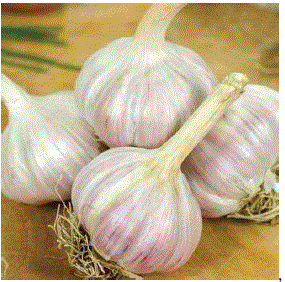 |
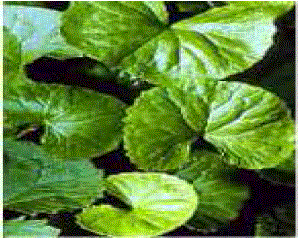 |
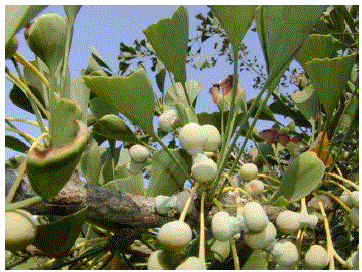 |
| Figure 1 |
Figure 2 |
Figure 3 |
Figure 4 |
|
| |
 |
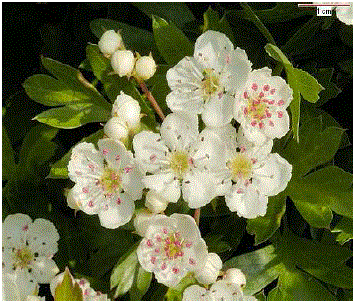 |
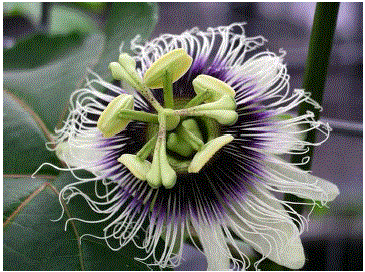 |
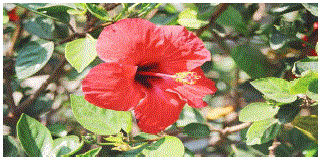 |
| Figure 5 |
Figure 6 |
Figure 7 |
Figure 8 |
|
| |
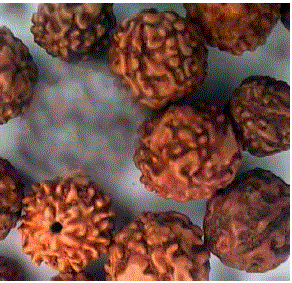 |
 |
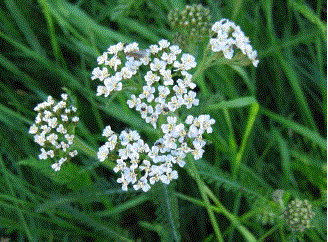 |
 |
| Figure 9 |
Figure 10 |
Figure 11 |
Figure 12 |
|
| |


















